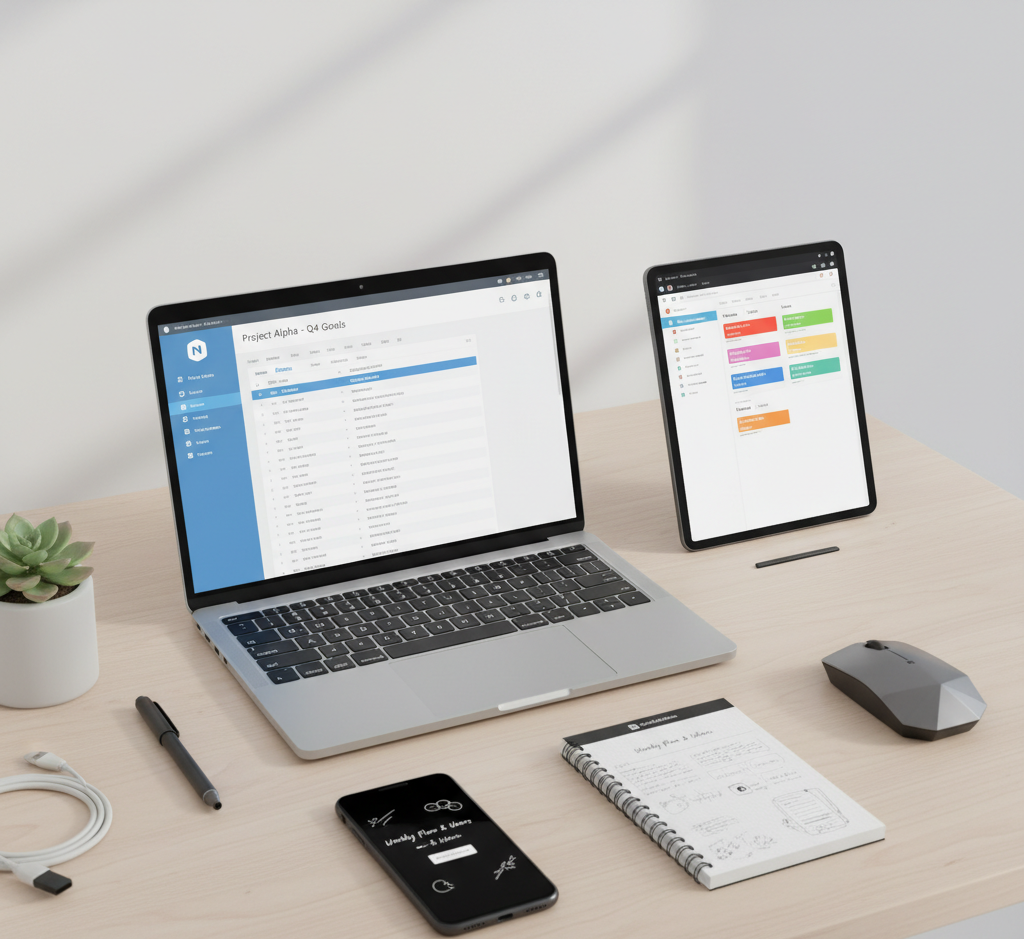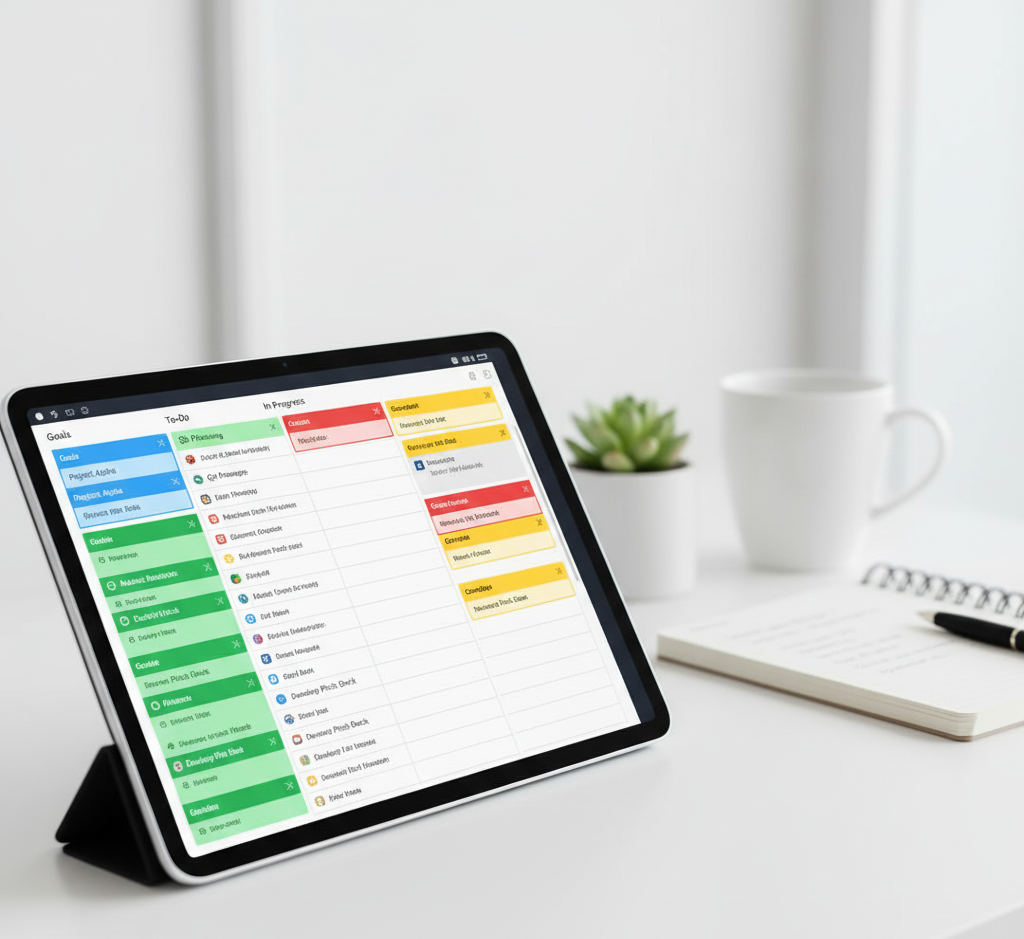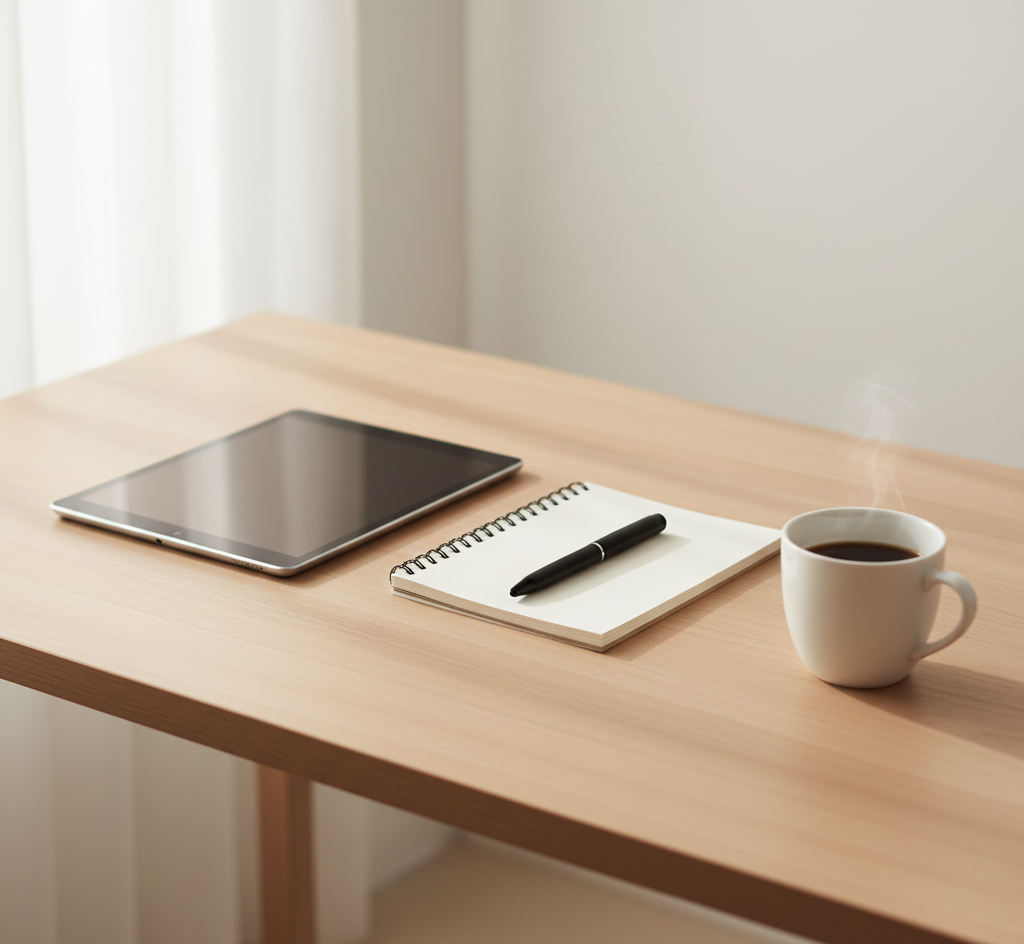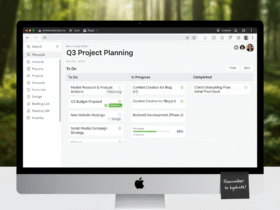Organize your mind, your goals, and your days — all in one calm, digital space.
Do you ever feel like your to-do list multiplies overnight? One moment, you’re planning your week. The next, you’ve got sticky notes, reminder apps, and five open tabs, all begging for attention. Sound familiar?
I’ve been there too — juggling work projects, personal goals, and the occasional existential crisis about productivity systems. I used to chase the “perfect planner,” until I realized the right one isn’t about features or fancy templates. It’s about alignment — finding a digital planner that fits how your mind actually works.
In this post, we’ll explore the best digital planners for you, based on your needs, tools, and mindset. Whether you crave structure or flow, minimalism or color-coded bliss, you’ll find something here to help you plan smarter — and feel lighter.
What Makes a Great Digital Planner?
Before we jump into recommendations, let’s clarify what “great” means. A digital planner should feel intuitive, flexible, and calm — not like another app yelling for your attention.
Here’s what defines an effective digital planner:
- Ease of use — You shouldn’t need a tutorial series just to add a task.
- Syncability — It should integrate smoothly with your calendar, notes, and reminders.
- Design and layout — A clean interface helps you think clearly.
- Cross-platform access — Desktop, tablet, and phone access keep you consistent.
- Customization — Whether you’re a minimalist or a color-coded planner, flexibility matters.
Key takeaway: The best planner is one you’ll actually use — not one that looks impressive in screenshots.
The Best Digital Planners (By Type of User)

Different personalities, workflows, and attention spans need different tools. Let’s look at which planner fits you best.
1. For the All-in-One Thinker: Notion Planner
If you love connecting notes, projects, and ideas into one system, Notion is your playground. It’s both a digital planner and a second brain.
Why it works:
- Fully customizable dashboards for daily, weekly, and monthly planning.
- Integrates with databases, goals, and habit tracking.
- Works beautifully on desktop and mobile.
Use it for: Goal setting, daily reflection, project planning, and journaling.
Key takeaway: If you want control and flexibility, Notion is your ultimate clarity canvas.
2. For the Time-Blocker: Todoist
You thrive on clear lists and deadlines. Todoist is a clean, distraction-free productivity powerhouse.
Why it works:
- Fast task entry with natural language (“Write blog post tomorrow at 9am”).
- Nested tasks and project folders for hierarchy.
- Syncs perfectly with Google Calendar and other apps.
Pro tip: Combine Todoist with a time-blocking calendar. You’ll see both your schedule and your priorities in one view.
Key takeaway: If you think in lists, Todoist turns chaos into clear, actionable flow.
3. For the Mindful Minimalist: GoodNotes or Zinnia

If you love handwriting or a tactile experience, digital paper planners like GoodNotes or Zinnia bring mindfulness to planning.
Why they work:
- Beautiful, customizable templates for journaling or daily logs.
- Works best with Apple Pencil or stylus for handwriting.
- Helps you slow down, reflect, and design your own system.
Best for: Creatives, reflective thinkers, and anyone who enjoys analog feel in digital form.
Key takeaway: If typing feels too fast-paced, writing digitally can ground your thoughts and reduce overwhelm.
4. For the Focused Professional: ClickUp or Asana
You’re managing complex projects, teams, or multiple goals — you need structure without rigidity.
Why it works:
- Task management with due dates, dashboards, and reporting.
- Ideal for goal tracking, recurring routines, and collaboration.
- Great mobile and desktop experiences.
Key takeaway: If you love seeing your goals in systems, ClickUp helps you balance big-picture vision with daily clarity.
5. For the Visual Dreamer: Trello

Trello turns tasks into cards and boards — it’s visual, tactile, and intuitive.
Why it works:
- Kanban-style boards for clear progress tracking.
- Great for personal planning, content calendars, or habit tracking.
- Easy drag-and-drop interface keeps things simple.
Bonus tip: Use emojis or gentle color coding to make your boards visually calming instead of cluttered.
Key takeaway: If you think in visuals, Trello transforms planning into creativity.
How to Choose the Right Digital Planner for You
Choosing the “best” digital planner is personal. Here’s how to match your mindset to your tool:
| The Thinker | Notion | Combines systems and creativity |
| The Doer | Todoist | Keeps focus sharp with lists |
| The Reflective | GoodNotes | Encourages mindful, slow planning |
| The Organizer | ClickUp | Ideal for structure and multitasking |
| The Visual | Trello | Turns goals into engaging visuals |
Reflection question: Which tool feels like breathing easier when you open it? That’s usually your best match.
Bonus: Digital Planner Templates Worth Trying
Want to skip setup? Try pre-built templates that save hours of tinkering:
- Notion Life Planner Template – For tracking goals, habits, and daily reflections.
- Todoist Daily Focus Template – For laser-focused task management.
- GoodNotes Minimal Journal – For visual and mindful daily planning.
- ClickUp Personal Productivity Board – For professionals juggling multiple areas.
- Trello Monthly Goals Board – For creatives who like to “see” their year.
Key takeaway: A good template should feel like a springboard, not a cage.
Maintaining Flow: Tips for Digital Planning Success

Even the best planner won’t help if it becomes digital clutter. Here’s how to keep your planning system light and alive:
- Review weekly: Clean up tasks, reflect on what worked.
- Keep categories minimal: The fewer lists you manage, the more clarity you gain.
- Use automations mindfully: Let your tools work for you, not distract you.
- Pause before adding: If a new system doesn’t simplify something, skip it.
I used to rebuild my entire planner every few months — until I realized simplicity beats novelty. Now, I just refine what works.
Key takeaway: Simplicity sustains momentum.
Conclusion
The right digital planner doesn’t make you productive — it makes you peaceful. It’s a mirror for your priorities, a structure for your time, and a quiet companion that helps you focus where it matters most.
Start small: pick one planner that aligns with your style, test it for a week, and notice how it feels. Clarity grows from consistency, not complexity.
If you’re ready to take your digital calm further, read my post on “Digital Declutter Checklist” — it’s the perfect next step to keep your planner (and mind) organized.





